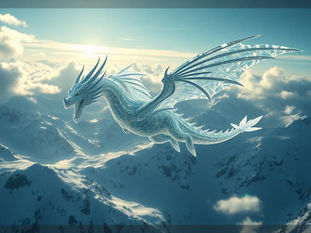

Midjourney can be a powerful tool for generating visual ideas, and that includes potential logo concepts. While it might not replace a professional graphic designer for a final brand package, it's excellent for getting started, finding inspiration, or creating initial visuals for personal use or small projects.
This guide will walk you through different techniques and prompt phrases you can use in Midjourney to steer the AI towards creating logo-like images. We'll cover basic prompts, shaping, adding elements, controlling style, and even getting text included (with some limitations).
Ready to start exploring logo ideas? Using a tool like the Midjourney Automation Suite from TitanXT can help you manage prompts and variations efficiently as you experiment with these techniques.
Start with Basic Logo Phrases
The easiest way to tell Midjourney you want a logo is by using key terms in your prompt.
Start simply with `logo for a [subject]` (e.g., `logo for a samurai helmet`).
Try variations like `emblem` or `minimalist logo` to reduce detail.
Use `vector logo` if you want something that looks easier to convert into a vector graphic.
Adding the word `design` often influences the style (e.g., `logo design`, `minimalist logo design`).
Combine terms like `minimal emblem design` or `vector logo design` for more specific results.
These basic phrases help Midjourney understand the visual goal, setting the stage for more specific instructions.
Give Your Logo a Specific Shape
You can guide the overall form of the logo by describing its shape.
Use phrases like `shaped like the letter A` (e.g., `minimal logo for a tech company shaped like the letter A`).
Try geometric shapes: `shaped like a circle`, `shaped like a triangle`, `shaped like a star`.
You can also use object shapes: `shaped like a mountain`.
Adding a shape description is a creative way to constrain the design and achieve unique structures.
Control the Logo's Appearance and Style
Logos often need specific visual characteristics. Tell Midjourney what to include or exclude.
Request `flat colors` to avoid gradients, which are difficult to convert to vector.
Ask for `vector shapes`, `geometric shapes`, or `smooth blobby shapes` to define the style of the graphic elements.
Use `straight lines` for a more linear or outline look.
Combine these: `flat colors and geometric shapes` or `flat colors and blobby vector shapes`.
Controlling these visual attributes helps you get results that are cleaner and potentially easier to adapt.
Add Specific Elements
Do you want your logo to feature certain objects or concepts? Include them in the prompt.
Use phrasing like `featuring a smartphone and a hammer`.
Try more imaginative combinations: `featuring a dragon and a computer`.
This technique is great for getting inspiration on how different visual ideas can be combined into a logo concept.
Remove Unwanted Details
Sometimes Midjourney adds things you don't want in a logo. Use the `--no` parameter to remove them.
Exclude elements that complicate vector conversion: `--no complex shapes`, `--no shading`, `--no gradients`.
Remove unwanted text or numbers: `--no text`, `--no letters`, `--no numbers`.
Using `--no` helps keep the image clean and focused, more suitable for a logo.
Including Text in Your Logo (Use with Caution)
Midjourney v6 allows adding text, but it's not perfect for precise logo wordmarks.
Use `add the text "Your Text Here"` at the end of your prompt (e.g., `logo design for a samurai helmet add the text "BUDO Supermarket"`).
Keep stylized values low for better text legibility (e.g., `--s 50`).
Results can vary greatly.
For reliable text in a logo, it's often better to add it later using graphics software. However, this feature can sometimes yield interesting layout ideas.
Define the Color Scheme
Control the colors to match your brand idea.
Request specific schemes: `black and white logo`, `warm color palette`, `cool color palette`, `neon colors`.
Specify two main colors: `purple and green logo`.
Being specific with color gives you more control over the final look and helps you visualize brand consistency.
Managing many prompt variations to find the perfect color scheme can be time-consuming. Automating parts of your workflow could save you effort. Check out the Midjourney Automation Suite from TitanXT to see if it fits your needs.
Explore Different Logo Styles
You can influence the overall style or purpose of the logo image.
Try `brand mark`: tends to produce icon-like images.
Use `word mark`: Midjourney might add imagery, but it pushes towards a text-heavy feel.
Request `mascot logo`: great for character-based designs.
Explore digital-focused styles: `3D gamer logo`, `social media icon`, `YouTuber logo`, `streamer logo`, `Esports logo`.
Try nostalgic styles: `vintage style logo`.
These terms steer the AI towards different aesthetic directions based on common design types.
Find Inspiration on the Midjourney Website
A great source of ideas is the Midjourney community showcase.
Go to the Midjourney website, use the search bar at the top, and type "logo". You'll see many examples created by other users. Look at the images and the prompts used to create them. You can often adapt these prompts for your own projects.
Consider Designer Influences
Adding designer names can subtly influence the style, though results are not guaranteed to match their work precisely.
Try adding `designed by Paul Rand` or `designed by Alan Fletcher` to your prompt to see how their aesthetic might influence the output.
Experiment with designer names known for different styles to see the visual shifts.
This is a more experimental technique, but it can lead to unexpected and interesting results.
Convert Your Midjourney Image to Vector
If you get a Midjourney image you like and want to use it as a graphic, you'll likely need to convert it to a vector graphic. This makes it scalable without losing quality. AI tools can help:
Vectorizer AI: A paid service known for clean traces.
Adobe Express PNG to Vector Converter: A free online tool from Adobe.
Look for other online vector converter tools.
Remember, converting to vector gets you a usable graphic, but it doesn't replace the full branding process from a professional designer. A professional can refine the vector, create variations, select fonts and colors, and develop brand guidelines.
Conclusion
Midjourney is a fantastic platform for sparking logo ideas and creating initial visual concepts quickly. By using specific prompt phrases for shapes, styles, elements, colors, and types, you can guide the AI towards results that fit your vision.
While the AI might not produce a final, ready-to-use brand logo, the images it generates can be invaluable inspiration, a starting point to show a designer, or suitable for personal projects and social media.
Exploring many ideas through prompting is key to finding the best concepts. Tools designed to streamline this process can be very helpful. Consider how the Midjourney Automation Suite from TitanXT might assist you in generating and organizing your logo explorations.






